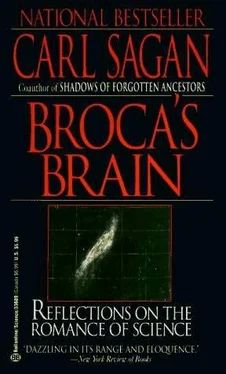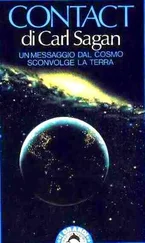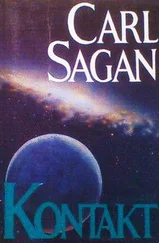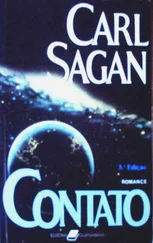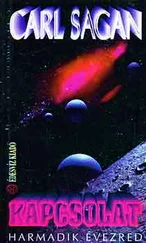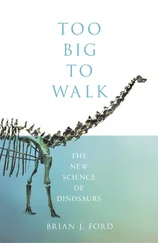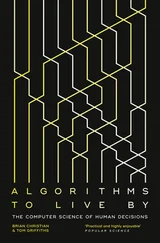Carl Sagan - Broca's Brain - The Romance of Science
Здесь есть возможность читать онлайн «Carl Sagan - Broca's Brain - The Romance of Science» весь текст электронной книги совершенно бесплатно (целиком полную версию без сокращений). В некоторых случаях можно слушать аудио, скачать через торрент в формате fb2 и присутствует краткое содержание. Жанр: Физика, на английском языке. Описание произведения, (предисловие) а так же отзывы посетителей доступны на портале библиотеки ЛибКат.
- Название:Broca's Brain: The Romance of Science
- Автор:
- Жанр:
- Год:неизвестен
- ISBN:нет данных
- Рейтинг книги:3 / 5. Голосов: 1
-
Избранное:Добавить в избранное
- Отзывы:
-
Ваша оценка:
- 60
- 1
- 2
- 3
- 4
- 5
Broca's Brain: The Romance of Science: краткое содержание, описание и аннотация
Предлагаем к чтению аннотацию, описание, краткое содержание или предисловие (зависит от того, что написал сам автор книги «Broca's Brain: The Romance of Science»). Если вы не нашли необходимую информацию о книге — напишите в комментариях, мы постараемся отыскать её.
Broca's Brain: The Romance of Science — читать онлайн бесплатно полную книгу (весь текст) целиком
Ниже представлен текст книги, разбитый по страницам. Система сохранения места последней прочитанной страницы, позволяет с удобством читать онлайн бесплатно книгу «Broca's Brain: The Romance of Science», без необходимости каждый раз заново искать на чём Вы остановились. Поставьте закладку, и сможете в любой момент перейти на страницу, на которой закончили чтение.
Интервал:
Закладка:
The youth of American astronomy in this period is eloquently reflected in the proud announcement in 1900 that the Berkeley Astronomical Department would henceforth be independent of the Civil Engineering Department at the University of California. A survey by Professor George Airy, later the British Astronomer Royal, regretted being unable to report on astronomy in America in 1832 because essentially there was none. He would not have said that in 1899.
There is never much sign in these journals of the intrusion of external (as opposed to academic) politics, except for an occasional notice such as the appointment by President McKinley of T. J. J. See as professor of mathematics to the U.S. Navy, and a certain continuing chilliness in scientific debates between the personnel of the Lick and Potsdam (Germany) Observatories.
Some signs of the prevailing attitudes of the 1890s occasionally trickle through. For example, in a description of an eclipse expedition to Siloam, Georgia, on May 28, 1900: “Even some of the whites were lacking in a very deep knowledge of things ‘eclipse-wise.’ Many thought it was a money-making scheme and what I intended to charge for admission was a very important question, frequently asked. Another idea was that the eclipse could be seen only from the inside of my observatory… Just here I wish to express my appreciation of the high moral tone of the community, for, with a population of only 100, including the immediate neighborhood, it sustains 2 white and 2 colored churches and during my stay I did not hear a single profane word… As an unsophisticated Yankee in the Southland, unused to Southern ways, I naturally made many little slips that were not considered ‘just the thing.’ The smiles at my prefixing ‘Mr.’ to the name of my colored helper caused me to change it to ‘Colonel,’ which was entirely satisfactory to everybody.”
A board of visitors was appointed to resolve some (never publicly specified) problems at the U.S. Naval Observatory. A report of this group-which consisted of two obscure senators and Professors Edward C. Pickering, George C. Comstock and Hale-is illuminating because it mentions dollar amounts. We find that the annual running costs of the major observatories in the world were: Naval Observatory, $85,000; Paris Observatory, $53,000; Greenwich Observatory (England), $49,000; Harvard Observatory, $46,000; and Pulkowa Observatory (Russia), $36,000. The salaries of the two directors of the U.S. Naval Observatory were $4,000 each, and at the Harvard Observatory, $5,000. The distinguished board of visitors recommended that in a “schedule of salaries which could be expected to attract astronomers of the class desired,” the salary of directors of observatories should be $6,000. At the Naval Observatory, computers (exclusively human at the time) were paid $1,200 per annum, but at the Harvard Observatory only $500 per annum, and were almost exclusively women. In fact, all salaries at Harvard, except for the director’s, were significantly lower than at the Naval Observatory. The committee stated: “The great difference in salaries at Washington and Cambridge, especially for the officers of lower grade, is probably unavoidable. This is partly due to Civil Service Rules.” An additional sign of astronomical impecuniosity is the announcement of the post of “volunteer research assistant” at Yerkes, which had no associated pay but which was said to provide good experience for students with higher degrees.
Then, as now, astronomy was besieged by “paradoxers,” proponents of fringe or crackpot ideas. One proposed a telescope with ninety-one lenses in series as an alternative to a telescope with a smaller number of lenses of larger aperture. The British in this period were similarly plagued but in perhaps a gentler way. For example, an obituary in the Monthly Notices of the Royal Astronomical Society (59:226) of Henry Perigal informs us that the deceased had celebrated his ninety-fourth birthday by becoming a member of the Royal Institution, but was elected a Fellow of the Royal Astronomical Society in 1850. However, “our publications contain nothing from his pen.” The obituary describes “the remarkable way in which the charm of Mr. Perigal’s personality won him a place which might have seemed impossible of attainment for a man of his views; for there is no masking the fact that he was a paradoxer pure and simple, his main conviction being that the Moon did not rotate, and his main astronomical aim in life being to convince others, and especially young men not hardened in the opposite belief, of their grave error. To this end he made diagrams, constructed models, and wrote poems; bearing with heroic cheerfulness the continued disappointment of finding none of them of any avail. He has, however, done excellent work apart from this unfortunate misunderstanding.”
The number of American astronomers in this period was very small. The by-laws of the Astronomical and Astrophysical Society of America state that a quorum is constituted by twenty members. By the year 1900 only nine doctorates had been granted in astronomy in America. In that year there were four astronomical doctorates: two from Columbia University for G. N. Bauer and Carolyn Furness; one from the University of Chicago for Forest Ray Moulton; and one from Princeton University for Henry Norris Russell.
Some idea of what was considered important scientific work in this period can be garnered from the prizes that were awarded. E. E. Barnard received the Gold Medal of the Royal Astronomical Society in part for his discovery of the Jovian moon Jupiter 5 and for his astronomical photography with a portrait lens. His steamer, however, was caught in an Atlantic storm, and he did not arrive in time for the celebration ceremony. He is described as requiring several days to recover from the storm, whereupon the RAS hospitably gave a second dinner for him. Barnard’s lecture seems to have been spectacular and made full use of that recently improved audio-visual aid, the lantern slide projector.
In his discussion of his photograph of the region of the Milky Way near Theta Ophiuchus he concluded that “the entire groundwork of the Milky Way… has a substratum of nebulous matter.” (Meanwhile H. K. Palmer reported no nebulosity in photographs of the globular cluster M13.) Barnard, who was a superb visual observer, expressed considerable doubts about Percival Lowell’s view of an inhabited and canal-infested Mars. In his thanks to Barnard for his lecture, the president of the Royal Astronomical Society, Sir Robert Ball, voiced concern that henceforth he “should regard the canals in Mars with some suspicion, nay, even the seas [of Mars, the dark areas] had partly fallen under a ban. Perhaps the lecturer’s recent experiences on the Atlantic might explain something of this mistrust.” Lowell’s views were not then in favor in England, as another notice in Observatory indicated. In response to an inquiry on which books had most pleased and interested him in 1896, Professor Norman Lockyer replied, “Mars by Percival Lowell, Sentimental Tommy by J. M. Barrie. (No Time for Reading Seriously).”
Prizes in astronomy for 1898 awarded by the Académie Française included one to Seth Chandler for the discovery of the variation in latitude; one to Belopolsky, partly for studies of spectroscopic binary stars; and one to Schott for work on terrestrial magnetism. There was also a prize competition for the best treatise on “the theory of perturbations of Hyperion,” a moon of Saturn. We are informed that “the only essay presented was that by Dr. G. W. Hill of Washington to whom the prize was awarded.”
The Astronomical Society of the Pacific’s Bruce Medal was awarded in 1899 to Dr. Arthur Auwers of Berlin. The dedicatory address included the following remarks: “Today Auwers stands at the head of German astronomy. In him is seen the highest type of investigator in our time, one perhaps better developed in Germany than in any other country. The work of men of this type is marked by minute and careful research, untiring industry in the accumulation of facts, caution in propounding new theories or explanations, and, above all, the absence of effort to gain recognition by being the first to make a discovery.” In 1899 the Henry Draper Gold Medal of the National Academy of Sciences was presented for the first time in seven years. The recipient was Keeler. In 1898 Brooks, whose observatory was in Geneva, New York, announced the discovery of his twenty-first comet-which Brooks described as “achieving his majority.” Shortly thereafter he received the Lalande Prize of the Académie Française for his record in discovering comets.
Читать дальшеИнтервал:
Закладка:
Похожие книги на «Broca's Brain: The Romance of Science»
Представляем Вашему вниманию похожие книги на «Broca's Brain: The Romance of Science» списком для выбора. Мы отобрали схожую по названию и смыслу литературу в надежде предоставить читателям больше вариантов отыскать новые, интересные, ещё непрочитанные произведения.
Обсуждение, отзывы о книге «Broca's Brain: The Romance of Science» и просто собственные мнения читателей. Оставьте ваши комментарии, напишите, что Вы думаете о произведении, его смысле или главных героях. Укажите что конкретно понравилось, а что нет, и почему Вы так считаете.
